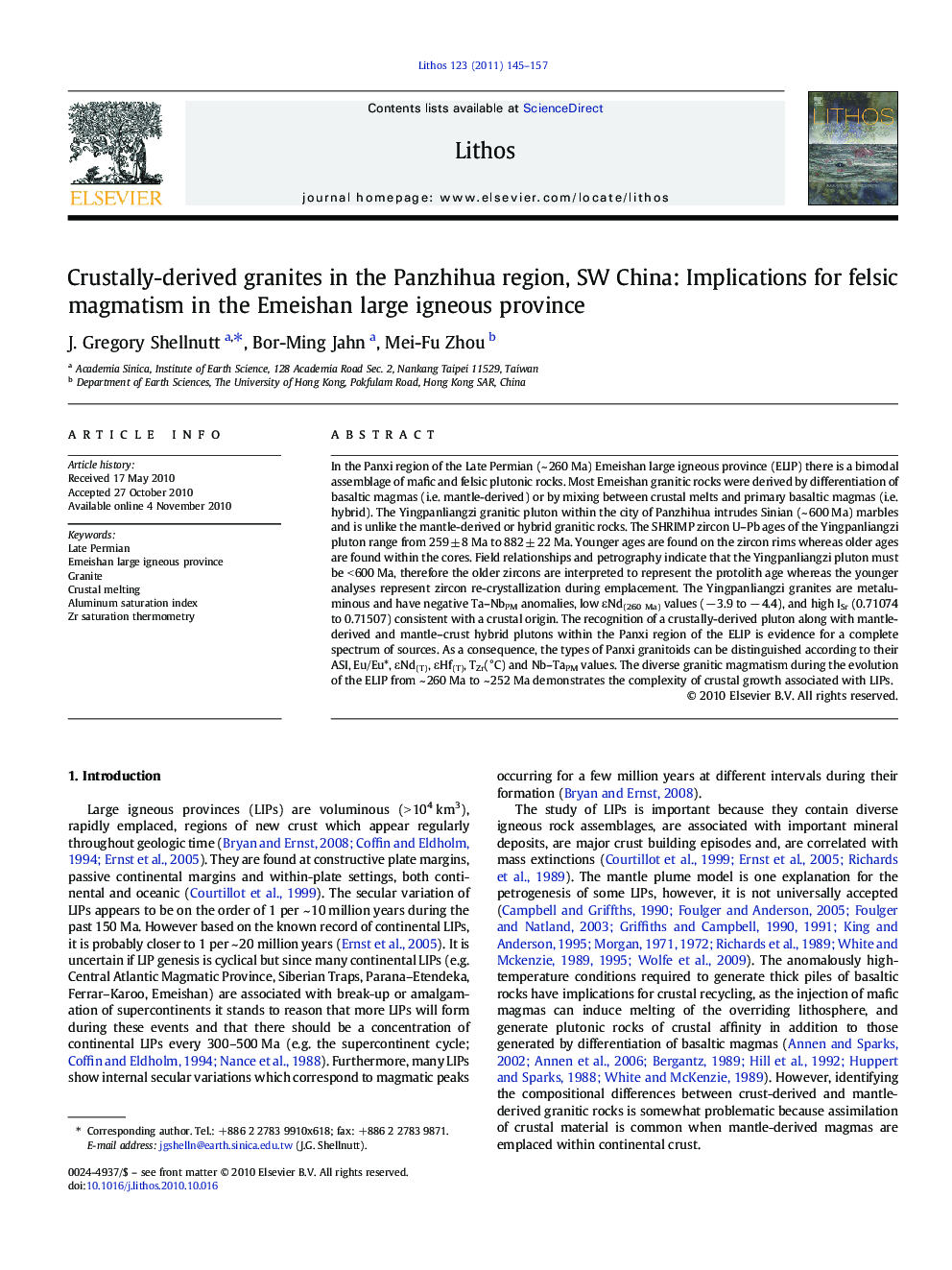| کد مقاله | کد نشریه | سال انتشار | مقاله انگلیسی | نسخه تمام متن |
|---|---|---|---|---|
| 4716792 | 1638722 | 2011 | 13 صفحه PDF | دانلود رایگان |

In the Panxi region of the Late Permian (~ 260 Ma) Emeishan large igneous province (ELIP) there is a bimodal assemblage of mafic and felsic plutonic rocks. Most Emeishan granitic rocks were derived by differentiation of basaltic magmas (i.e. mantle-derived) or by mixing between crustal melts and primary basaltic magmas (i.e. hybrid). The Yingpanliangzi granitic pluton within the city of Panzhihua intrudes Sinian (~ 600 Ma) marbles and is unlike the mantle-derived or hybrid granitic rocks. The SHRIMP zircon U–Pb ages of the Yingpanliangzi pluton range from 259 ± 8 Ma to 882 ± 22 Ma. Younger ages are found on the zircon rims whereas older ages are found within the cores. Field relationships and petrography indicate that the Yingpanliangzi pluton must be < 600 Ma, therefore the older zircons are interpreted to represent the protolith age whereas the younger analyses represent zircon re-crystallization during emplacement. The Yingpanliangzi granites are metaluminous and have negative Ta–NbPM anomalies, low εNd(260 Ma) values (− 3.9 to − 4.4), and high ISr (0.71074 to 0.71507) consistent with a crustal origin. The recognition of a crustally-derived pluton along with mantle-derived and mantle–crust hybrid plutons within the Panxi region of the ELIP is evidence for a complete spectrum of sources. As a consequence, the types of Panxi granitoids can be distinguished according to their ASI, Eu/Eu*, εNd(T), εHf(T), TZr(°C) and Nb–TaPM values. The diverse granitic magmatism during the evolution of the ELIP from ~ 260 Ma to ~ 252 Ma demonstrates the complexity of crustal growth associated with LIPs.
Research Highlights
► The Yingpanliangzi pluton is 260 Ma.
► The Yingpanliangzi pluton is derived by partial melting of the crust.
► The granitoids of the ELIP are derived from the mantle, mantle+crust and the crust.
► The ELIP granitoids can be distinguished by their ASI, Eu/Eu*, ɛNd(T) and zircon ɛHf(T) values.
Journal: Lithos - Volume 123, Issues 1–4, April 2011, Pages 145–157